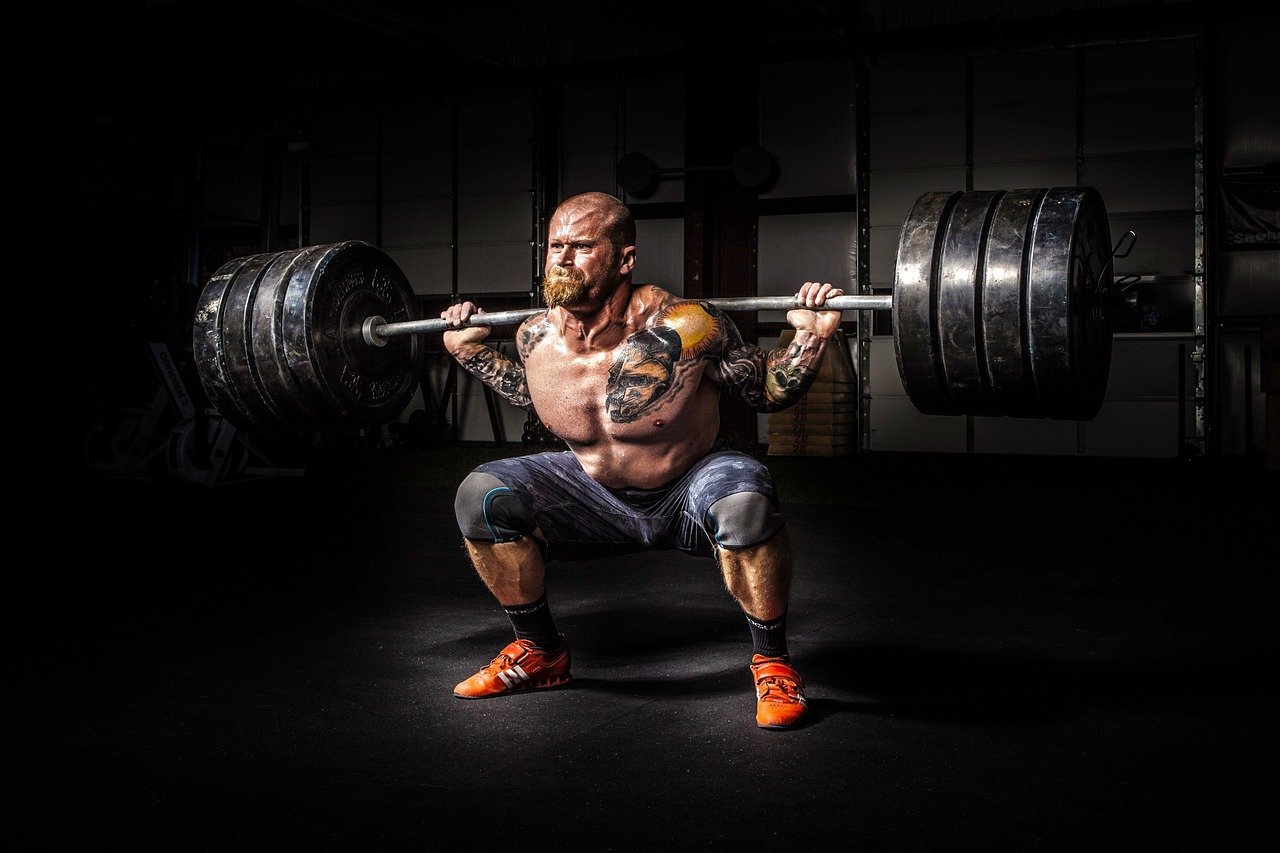In the realm of fitness and exercise, calf training plays a vital role in building strong and defined lower legs. However, with the multitude of options available, it can be overwhelming to choose the most effective calf gym machine. This article aims to provide a comprehensive summary of different calf gym machines, their costs, and a comparison between them. By delving into each machine’s features and benefits, you will gain a deeper understanding of which calf gym machine suits your needs and fitness goals.

Types of Calf Gym Machines
When it comes to calf training, there are several types of gym machines that can help target and strengthen the calf muscles. These machines provide a focused and controlled way to work the calves, allowing for both isolation and progressive overload. In this article, we will explore four common types of calf gym machines: the seated calf raise machine, the standing calf raise machine, the leg press calf raise machine, and the calf extension machine. Each machine has its own unique features and benefits, and understanding how they differ can help you make an informed decision about which one is best suited to your specific needs and goals.
Seated Calf Raise Machine
Description
The seated calf raise machine is designed to primarily target the soleus muscle, which is located in the lower part of the calf. This machine consists of a seat with a footplate and a lever system that allows for controlled movement. The footplate is positioned in front of your knees, and upon pushing it downward, your calves are engaged in a concentric contraction. The resistance can be adjusted to suit your strength level, making it suitable for both beginners and advanced users.
Benefits
Using the seated calf raise machine offers several benefits. Firstly, it allows for a full range of motion, as the seat and lever system provide stability and support throughout the exercise. This can help to better activate the calf muscles and ensure proper form. Additionally, the range of motion can be adjusted to target specific areas of the calf, such as the lower or upper portion. The seated position also minimizes the involvement of other muscle groups, allowing for more focused calf training.
How to Use
To use the seated calf raise machine, begin by adjusting the seat height so that your knees are bent at a 90-degree angle when your feet are on the footplate. Place the balls of your feet on the footplate, with your heels extending off the edge. Grasp the handles for stability, and slowly push the footplate downward by extending your ankles. Once you reach the bottom of the movement, hold for a brief second and then return to the starting position by flexing your ankles and raising your toes.
Common Variations
There are a few common variations of the seated calf raise exercise that can be incorporated into your routine. One variation involves performing the exercise with one leg at a time, which can help to further isolate and challenge the calf muscles. Another variation is the use of different foot positions, such as a toes-in or toes-out stance, which can emphasize different areas of the calves. Additionally, using different resistance techniques, such as slow negatives or partial reps, can add variety to your calf training routine.

Standing Calf Raise Machine
Description
The standing calf raise machine, also known as the calf raise platform, is designed to target both the gastrocnemius and soleus muscles of the calf. This machine consists of a raised platform with a shoulder pad and a lever system for resistance. The platform is positioned underneath your shoulders, and by pushing upward with the balls of your feet, your calves are engaged in a concentric contraction. The shoulder pad provides support and stability during the exercise.
Benefits
Using the standing calf raise machine offers several benefits. Firstly, it allows for more functional calf training, as the movement closely mimics activities such as walking, running, and jumping. This can help to improve calf strength and power in a more sport-specific manner. Additionally, the standing position engages more of the stabilizing muscles of the lower body, providing a more comprehensive workout. The resistance can also be easily adjusted to accommodate different strength levels and goals.
How to Use
To use the standing calf raise machine, start by adjusting the shoulder pad height so that it rests comfortably on your shoulders. Position your feet on the platform with the balls of your feet on the edge and your heels hanging off. Keep your core engaged and your back straight throughout the movement. From this starting position, slowly raise your heels by extending your ankles as high as possible. Hold the contraction at the top for a brief moment and then lower your heels back down to the starting position.
Common Variations
There are a few variations of the standing calf raise exercise that can be incorporated into your routine. One variation involves performing the exercise with one leg at a time, which increases the intensity and demands greater stability. Another variation is the use of different foot positions, such as a toes-in or toes-out stance, which can target different areas of the calves. The use of different tempos, such as a slow eccentric phase or explosive concentric phase, can also add variety and challenge to your calf training.
Leg Press Calf Raise Machine
Description
The leg press calf raise machine, as the name suggests, combines elements of the leg press and calf raise exercises. This machine is designed to target both the gastrocnemius and soleus muscles, providing a comprehensive calf workout. It consists of a seat and a footplate, similar to a leg press machine, but with the addition of a calf raise platform. By pushing against the footplate, you engage your calves in a concentric contraction while the leg press movement provides stability and support.
Benefits
Using the leg press calf raise machine offers several benefits. Firstly, it allows for a greater load to be used compared to other calf machines, as the leg press movement engages larger muscle groups such as the quadriceps and glutes. This can lead to increased strength and muscle growth in the calves. Additionally, the machine provides a comfortable and stable position, reducing the strain on the lower back and allowing for better overall control of the movement.
How to Use
To use the leg press calf raise machine, start by adjusting the seat height so that your knees are bent at a 90-degree angle when your feet are on the footplate. Place the balls of your feet on the calf raise platform, with your heels extending off the edge. Position your feet hip-width apart. Push against the footplate by extending your knees and hips, using your calf muscles to raise your heels as high as possible. Hold the contraction at the top for a brief moment and then lower your heels back down to the starting position by flexing your ankles.
Common Variations
Some variations of the leg press calf raise exercise can be incorporated to target different areas of the calf muscles. Adjusting the foot position, such as placing your toes in a turned-out position, can emphasize the inner calf muscles. Conversely, placing your toes in a turned-in position can target the outer calf muscles. Additionally, using different resistance techniques, such as dropsets or supersets, can add variety and challenge to your leg press calf raise routine.

Calf Extension Machine
Description
The calf extension machine is a specialized piece of equipment designed specifically for targeting the calf muscles. This machine typically consists of a platform for the balls of your feet, a lever system for resistance, and a seat or backrest for support. By pressing against the platform with your feet, you engage your calves in a concentric contraction. The resistance can usually be adjusted to suit your strength level.
Benefits
Using the calf extension machine offers several benefits. Firstly, it provides a highly targeted and isolated workout for the calves, allowing for precise muscle activation and growth. This can be particularly beneficial for individuals looking to bring up lagging calf development or improve muscular imbalances. Additionally, the machine provides a stable and controlled environment, reducing the risk of injury and ensuring proper form.
How to Use
To use the calf extension machine, adjust the seat height so that your knees are bent at a 90-degree angle when your feet are on the platform. Place the balls of your feet on the platform, with your heels hanging off the edge. Grasp the handles or rest your hands on the backrest for stability. From this starting position, press against the platform by extending your ankles and raising your heels as high as possible. Hold the contraction at the top for a brief moment and then slowly lower your heels back down to the starting position by flexing your ankles.
Common Variations
While the calf extension machine is designed for a specific movement pattern, there are a few variations that can be incorporated to add variety to your calf training. One variation involves performing the exercise with one leg at a time, which can increase the intensity and put more emphasis on each calf individually. Another variation is the use of different foot positions, such as a toes-in or toes-out stance, which can target different areas of the calves. Adding resistance bands or using different tempos can also provide different challenges and stimulate further calf growth.
Factors to Consider when Choosing a Calf Gym Machine
When choosing a calf gym machine, there are several factors to consider to ensure that you select the one that best suits your needs and goals. These factors can help guide your decision-making process and ensure that you invest in a machine that will provide you with effective and enjoyable calf training.
Targeted Muscles
Different calf gym machines target different muscles within the calves. Understanding the specific muscles that each machine engages can help you choose a machine that aligns with your goals. For example, if you are looking to primarily target the soleus muscle, the seated calf raise machine may be the best option. If you want to focus on both the gastrocnemius and soleus muscles, the standing calf raise machine or the leg press calf raise machine may be more suitable.
Machine Design and Adjustability
Consider the design and adjustability of the calf gym machine. Look for a machine that allows for proper body alignment, stability, and range of motion. The seat height, footplate position, and shoulder pad or backrest should be adjustable to accommodate different body sizes and provide optimal comfort and form. Additionally, ensure that the weight stack or resistance system is easily adjustable, allowing for progressive overload as your strength and muscle endurance improve.
Weight Capacity
Check the weight capacity of the calf gym machine to ensure that it can accommodate your body weight and any additional weight you may want to add. It is important to select a machine that is robust and sturdy enough to handle heavy loads without compromising safety or performance. Consider your current weight and any potential weight goals and choose a machine that can comfortably support your needs.
Additional Features
Some calf gym machines offer additional features that can enhance your training experience. These may include built-in calf raise variations, such as a donkey calf raise or a seated calf raise with a forward-leaning posture. Other features could include adjustable foot positions to target different areas of the calves, or the ability to incorporate resistance bands for added challenge. Consider these additional features and determine if they align with your training preferences and goals.
Ease of Use
Consider the ease of use of the calf gym machine. Look for a machine that is intuitive and user-friendly, with clear instructions and comfortable positioning. Ideally, the machine should require minimal setup or adjustments between exercises, allowing for efficient and uninterrupted training sessions. A machine that is easy to use will enhance your overall training experience and encourage consistency and adherence.
Durability
Investing in a durable and well-built calf gym machine is essential for long-term use and functionality. Look for machines made from high-quality materials that can withstand heavy use and resist wear and tear over time. Consider the reputation and reliability of the manufacturer or brand, and read reviews or testimonials from other users to gauge the durability and longevity of the machine.
Cost
Cost is an important factor to consider when choosing a calf gym machine. Set a budget range that aligns with your financial resources and goals, and research machines within that range. While it is tempting to opt for the cheapest machine available, it is important to strike a balance between cost and quality. Consider the value that the machine offers in terms of features, durability, and effectiveness, and select a machine that provides the best overall value for your investment.
Comparing Calf Gym Machines
When comparing different calf gym machines, it is helpful to consider the similarities and differences between each machine. This can allow for a more informed decision-making process and help you choose the machine that aligns with your specific goals and preferences. Let’s compare the different calf gym machines based on their key attributes and features.
Seated Calf Raise vs. Standing Calf Raise
The seated calf raise machine and the standing calf raise machine are both effective options for targeting the calf muscles, but they differ in a few key aspects. The seated calf raise machine primarily targets the soleus muscle, while the standing calf raise machine targets both the soleus and gastrocnemius muscles. Additionally, the seated calf raise machine allows for more controlled and isolated movements, while the standing calf raise machine offers a more functional and sport-specific workout. Consider your specific goals and preferences to determine which machine would be most beneficial for you.
Seated Calf Raise vs. Leg Press Calf Raise
Both the seated calf raise machine and the leg press calf raise machine provide effective ways to target the calf muscles, but they differ in terms of muscle activation and overall stability. The seated calf raise machine primarily targets the soleus muscle, while the leg press calf raise machine engages both the soleus and gastrocnemius muscles. The seated calf raise machine offers a more isolated and controlled movement, ideal for precise muscle activation, while the leg press calf raise machine allows for a greater load and engages larger muscle groups. Consider your goals and preferences to determine which machine is more suitable for your needs.
Seated Calf Raise vs. Calf Extension Machine
The seated calf raise machine and the calf extension machine are designed for specific calf training purposes and offer different benefits. The seated calf raise machine primarily targets the soleus muscle, while the calf extension machine provides a more comprehensive calf workout by engaging both the gastrocnemius and soleus muscles. The seated calf raise machine offers a stable and controlled movement pattern, while the calf extension machine allows for more isolated and precise muscle activation. Consider your specific goals and preferred training style to choose the machine that best aligns with your needs.
Standing Calf Raise vs. Leg Press Calf Raise
The standing calf raise machine and the leg press calf raise machine both engage the gastrocnemius and soleus muscles, but they differ in terms of movement pattern and overall stability. The standing calf raise machine offers a more functional and sport-specific movement, closely mimicking activities such as walking, running, and jumping. It engages more of the stabilizing muscles of the lower body, providing a more comprehensive workout. On the other hand, the leg press calf raise machine allows for a greater load and engages larger muscle groups, such as the quadriceps and glutes. Consider your goals and preferences to determine which machine would be the most suitable for you.
Standing Calf Raise vs. Calf Extension Machine
The standing calf raise machine and the calf extension machine both have unique features and benefits that can contribute to effective calf training. The standing calf raise machine offers a more functional movement pattern and engages a greater range of muscles, including the gastrocnemius and soleus muscles, as well as the stabilizing muscles of the lower body. It can help improve calf strength and power in a sport-specific manner. On the other hand, the calf extension machine provides a highly targeted and isolated workout for the calves. It is particularly beneficial for individuals looking to bring up lagging calf development or improve muscular imbalances. Consider the specific goals and preferences to determine which machine would be most appropriate for your needs.
Leg Press Calf Raise vs. Calf Extension Machine
The leg press calf raise machine and the calf extension machine offer different approaches to calf training and target slightly different muscle groups. The leg press calf raise machine allows for a greater load and engages larger muscle groups, such as the quadriceps and glutes, in addition to the gastrocnemius and soleus muscles. This can lead to increased strength and muscle growth in the calves. On the other hand, the calf extension machine provides a highly targeted and isolated workout for the calves, allowing for precise muscle activation and growth. Consider your goals and preferences to determine which machine would be most suitable for you.
Summary of Seated Calf Raise Machine
Description
The seated calf raise machine is designed to target the soleus muscle, and it consists of a seat with a footplate and a lever system. It provides a full range of motion, adjustable resistance, and a stable position for focused calf training.
Benefits
Using the seated calf raise machine allows for targeted training of the soleus muscle, providing benefits such as increased calf strength and muscle growth. It also minimizes the involvement of other muscle groups, providing focused isolation.
How to Use
To use the seated calf raise machine, adjust the seat height and place the balls of your feet on the footplate. Push the footplate downward by extending your ankles, hold the contraction, and then return to the starting position.
Variations
Common variations of the seated calf raise exercise include single-leg variations and different foot positions. By incorporating these variations, you can challenge the calf muscles in different ways and add variety to your routine.
Cost
The cost of a seated calf raise machine can vary depending on the brand, quality, and additional features. Depending on the specific model, expect to pay anywhere from a few hundred dollars to over a thousand dollars for a commercial-grade machine.
Summary of Standing Calf Raise Machine
Description
The standing calf raise machine targets both the gastrocnemius and soleus muscles, and it consists of a raised platform with a shoulder pad and a lever system for resistance. It provides a sport-specific movement and engages more of the stabilizing muscles of the lower body.
Benefits
Using the standing calf raise machine improves calf strength and power in a functional and sport-specific manner. It engages a greater range of muscles, provides a comprehensive workout, and allows for adjustable resistance.
How to Use
To use the standing calf raise machine, adjust the shoulder pad height, position your feet on the platform, and push upward with the balls of your feet. Raise your heels as high as possible, hold the contraction, and then lower your heels back down.
Variations
Variations of the standing calf raise exercise include single-leg variations and different foot positions. By incorporating these variations, you can increase intensity, target different areas of the calves, and add variety to your routine.
Cost
The cost of a standing calf raise machine can vary depending on the brand, quality, and additional features. Depending on the specific model, expect to pay anywhere from a few hundred dollars to over a thousand dollars for a commercial-grade machine.
Summary of Calf Extension Machine
Description
The calf extension machine provides a highly targeted and isolated workout for the calf muscles, and it usually consists of a platform for the balls of your feet, a lever system for resistance, and a seat or backrest for support.
Benefits
Using the calf extension machine allows for precise muscle activation and can help correct lagging calf development or muscular imbalances. It provides stability, reduces the risk of injury, and allows for controlled movements.
How to Use
To use the calf extension machine, adjust the seat height, place the balls of your feet on the platform, and press against the platform by extending your ankles. Raise your heels as high as possible, hold the contraction, and then slowly lower your heels back down.
Variations
Variations of the calf extension exercise include single-leg variations and different foot positions. By incorporating these variations, you can target different areas of the calves and add variety to your routine.
Cost
The cost of a calf extension machine can vary depending on the brand, quality, and additional features. Depending on the specific model, expect to pay anywhere from a few hundred dollars to over a thousand dollars for a commercial-grade machine.
In conclusion, choosing the right calf gym machine requires considering various factors such as the targeted muscles, machine design and adjustability, weight capacity, additional features, ease of use, durability, and cost. Each type of calf gym machine has its own unique benefits and can provide effective calf training when used correctly. Whether you opt for the seated calf raise machine, standing calf raise machine, leg press calf raise machine, or calf extension machine, incorporating one of these machines into your calf training routine can help you improve calf strength, muscle growth, and overall lower body performance.


